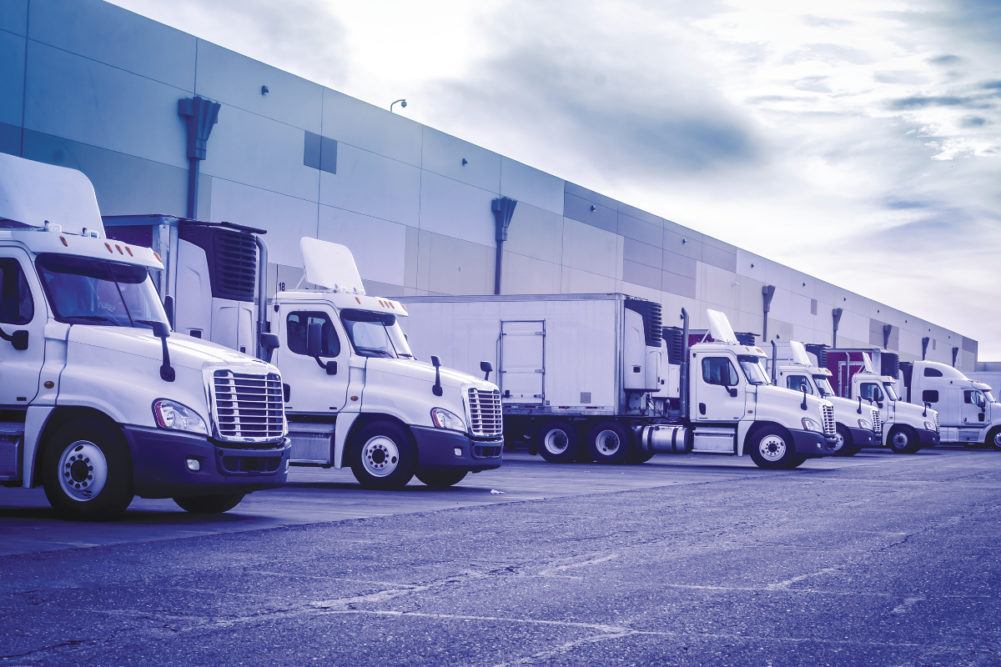From farm to store, keeping meat safe during transportation is critical. Large-scale production and nationwide distribution must have optimal temperature controls. Even slight temperature changes can encourage bacteria growth and compromise quality. Due to refrigerated transportation and cold chain logistics, meat arrives safely.
First, the optimal temperature range. Frozen meat must stay at 0°F or below. Refrigerated meat needs to stay between 28-32°F. As a result, this prevents bacteria growth. This also ensures freshness. A refrigerated semi-truck uses small diesel engines. This will power its refrigeration units and trailers. Sensors track interior temperatures. Adjustments can be made. Additionally, trucks are pre-cooled before loading. Once properly packaged and loaded, the cold chain begins.
During transport, meticulous temperature monitoring provides transparency. Moreover, route planning minimizes unnecessary stops or delays that disrupt the chain. Arrival times are coordinated to avoid bottlenecks. Science-based protocols ensure safe, and high-quality hauling of frozen freight.
Keep reading to know more about the science behind safe meat transportation. Let’s explore more!
Cold Chain Logistics: Safely Transporting Meat Nationwide
Getting meat from processing plants to grocery stores nationwide is crucial yet complex. Cold chain logistics, also known as refrigerated transportation or temperature-controlled shipping. This is the specialized process of regulating temperatures during transportation. It helps prevent spoilage and bacterial growth. When done correctly, it ensures meat arrives at its final destination in fresh condition.
Why Does Temperature Control Matters?
Proper temperature control preserves meat quality and prevents foodborne illnesses. Frozen freight or icy cargo must be kept at 0°F or below. Refrigerated or chilled cargo should stay between 28-32°F.
Going outside these precise ranges enables dangerous bacteria like E. coli and salmonella. By doing so, it thrives and compromises meat freshness. Maintaining temperature control is the foundation of any effective cryogenic shipping system.
Refrigerated Transportation Methods
Specially designed refrigerated semi-trucks are used to haul frozen meat over land. Well-insulated trailers protect against outside temperature influences. Self-powered refrigeration units mounted on the front cool the interior space.
To remove heat, diesel engines drive compressors that circulate refrigerant through coils. Additionally, adjustable sensors track temperature down to fractions of a degree.
Moreover, drivers can change the settings to maintain the best conditions. Before loading, trucks are pre-cooled to reach ideal negative or near-freezing temperatures.
Packaging for Efficient Cooling
Meat is packed in sealed plastic cases which make handling efficient during loading and distribution. The cases are designed with air space and circulation around the product. This ensures even and complete cooling.
Truck doors are quickly closed after loads are securely loaded in the refrigerated trailer. The unbroken cold chain begins the moment packaging seals are intact and truck doors shut.
Managing In-Transit Conditions
Meticulous temperature tracking is vital while perishable freight is in transit between destinations. Digital thermometer recorders with data loggers run 24/7. This continuously logs interior temperatures at regular intervals throughout the route.
Furthermore, the data provides full transparency into temperature fluctuations. If zones start to warm, instant alerts can notify drivers. So adjustments can be made or contingencies. It includes re-icing or rerouting implemented as needed to maintain cold chain integrity.
Optimizing the routes
Transport routes are planned for large timeliness and minimal stops, delays or openings. Cold chain disruptions are rare on direct routes, since the truck moves steadily. Delays are detrimental and risky. Arrival times are coordinated with distribution centers for immediate offloading upon arrival.
Moreover, route planning ensures seamless cold chain handoffs between frozen goods transport.
Verified on Arrival
Receivers inspect frozen goods or chilled cargo loads upon arrival to ensure their integrity. It stays within the acceptable temperature bounds throughout the journey. Meat is thoroughly assessed for signs of temperature abuse like freeze-thaw cycles.
Furthermore, all data loggers confirmed proper temperatures were sustained after verification. The freshly transported meat is approved for distribution to retailers.
Safety Through Diligent Temperature Control
By adhering to strict protocols, cold chain logistics ensures meat arrives pathogen-free and of high quality. Customers can have confidence in purchasing safe and delicious meat. Thanks to the diligent temperature control applied from pasture to plate.
Last But Not Least
Thanks to refrigerated transportation, frozen and refrigerated meat arrives safely nationwide. Diligent temperature control from processing to table is crucial to quality and safety. Proper cold chain logistics ensures the highest standards are met for meat.
For exceptional frozen freight, VO Logistics offers cutting-edge refrigerated transportation solutions. Their experts oversee end-to-end cold chain needs with real-time tracking and monitoring.
Contact VO Logistics today for all your temperature-controlled shipping and icy cargo logistics!
FAQs:
- What is the importance of maintaining specific temperature ranges during meat transportation?
Maintaining precise temperature ranges, such as 0°F or below for frozen meat and 28-32°F for refrigerated meat, is crucial to prevent bacterial growth, preserve meat quality, and ensure food safety.
- How do refrigerated semi-trucks ensure proper temperature control during transportation?
Specially designed refrigerated semi-trucks use self-powered refrigeration units driven by diesel engines to circulate refrigerant through coils, while adjustable sensors track temperatures with great precision. Trucks are also pre-cooled before loading to reach ideal temperatures.
- What role does meticulous temperature tracking play in meat transportation?
Meticulous temperature tracking using digital thermometer recorders with data loggers provides transparency into temperature fluctuations during transit. Instant alerts notify drivers of any deviations, allowing for adjustments to maintain the cold chain’s integrity.
- Why is route planning and coordination crucial in cold chain logistics for meat transportation?
Route planning minimizes unnecessary stops or delays, ensuring that meat reaches its destination promptly and without disruptions to the cold chain. Coordination with distribution centers ensures immediate offloading upon arrival.
- How is the integrity of meat shipments verified upon arrival, and why is this important?
Receivers inspect meat shipments to ensure they have stayed within acceptable temperature bounds throughout the journey. This verification process, coupled with data logger records, confirms that the meat has been transported safely, free from temperature abuse, and is suitable for distribution to retailers.


